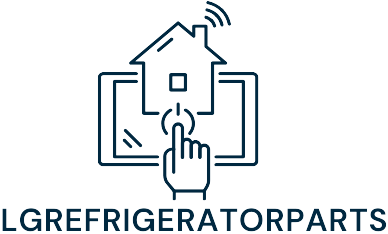Table of Contents
ToggleBuying a home in Wisconsin can feel like trying to catch a cheese curd in a tornado. With rising prices and hefty down payments, many potential homeowners find themselves feeling like they’re stuck in a never-ending game of financial limbo. But fear not! Down payment assistance programs are here to save the day, making homeownership more accessible than ever.
Overview of Down Payment Assistance Wisconsin
Down payment assistance programs in Wisconsin aim to alleviate the financial burden faced by potential homeowners. These programs provide financial aid to decrease the amount required at closing, targeting those with limited savings.
Several funding sources include government grants, loans, and tax credits, each offering unique benefits to qualifying applicants. Many organizations participate in these assistance programs, including state agencies and non-profit groups.
Income limits often determine eligibility for these programs, with most assistance options available to low- to moderate-income households. Participants might enjoy benefits such as reduced mortgage insurance or interest rates, making homeownership more achievable.
Specific programs, like the Wisconsin Housing and Economic Development Authority (WHEDA), offer comprehensive assistance options. WHEDA provides loans and grants designed for first-time homebuyers who meet specific criteria. Moreover, other local resources may exist that cater to different communities and populations within the state.
Mortgage credit certificates also feature prominently in down payment assistance strategies. These certificates help qualified buyers reduce their federal tax liabilities, enhancing affordability.
Prospective homeowners should explore all available programs, as the requirements and benefits vary widely. Local housing agencies often provide guidance on the application process and available resources. Many applicants successfully navigate the assistance landscape with the right information and support.
Types of Down Payment Assistance Programs

Wisconsin offers a variety of down payment assistance programs catering to different needs. Understanding these options helps prospective homeowners make informed choices.
State-Funded Programs
State-funded programs provide essential resources for first-time homebuyers in Wisconsin. The Wisconsin Housing and Economic Development Authority (WHEDA) offers various assistance options, including grants and reduced-interest loans. Fund allocation often targets low- to moderate-income households, ensuring broader access to homeownership. Applicants might find assistance with both down payments and closing costs, significantly easing the financial burden. Specific eligibility criteria apply, emphasizing income limits and credit requirements. Homebuyers explore the WHEDA website or contact local agencies for detailed information on program specifics.
Local Assistance Options
Local assistance options enhance access for diverse communities across Wisconsin. Many counties and municipalities administer down payment programs tailored to their residents. Examples include the Milwaukee Home Buyer Assistance Program, which offers grants for down payments and closing costs. Some cities provide forgivable loans, rewarding eligible buyers who reside in the property for a specified period. Programs typically aim at low- to moderate-income families, making homeownership more attainable. Residents should check with local housing authorities for program details, application processes, and specific funding availability.
Eligibility Requirements for Assistance
Understanding the eligibility criteria for down payment assistance is crucial for potential homebuyers in Wisconsin. These requirements help identify who qualifies for various programs aimed at making homeownership attainable.
Income Limits
Income limits play a significant role in qualifying for down payment assistance programs. Typically, federal guidelines set income thresholds based on household size to determine eligibility. These thresholds usually target low- to moderate-income households, with incomes often capped at 80% to 120% of the area median income. For example, a family of four in Madison may see a limit around $80,000, while in rural areas, the cap could be lower. Applicants need to provide documentation, such as pay stubs and tax returns, to verify their income status.
First-Time Homebuyer Criteria
First-time homebuyer criteria are essential for accessing many assistance programs in Wisconsin. Generally, a first-time homebuyer is someone who hasn’t owned a home in the past three years. Additionally, some programs may also consider individuals who are purchasing a home in a targeted area. Applicants often need to complete a homebuyer education course. This course equips them with knowledge about financial responsibilities and the homebuying process. Moreover, compliance with additional requirements from local programs may vary, so checking specific criteria is vital.
How to Apply for Down Payment Assistance
Applying for down payment assistance in Wisconsin involves clear steps and specific criteria. Understanding the process can simplify the journey toward homeownership.
Application Process
Start by identifying the appropriate program for your needs. Many assistance options come from WHEDA and local housing authorities, requiring an application form. After selecting a program, connect with a participating lender. These lenders can guide applicants through the submission process and provide valuable insight. Applicants must complete any required homebuyer education courses as part of the criteria. Next, stay informed about deadlines and funding availability, as these factors can affect one’s ability to secure assistance.
Required Documentation
Gathering necessary documentation is vital for a smooth application process. Income verification documents often include pay stubs, tax returns, and bank statements. Some programs may request proof of employment or additional financial assets. Additionally, providing a government-issued ID or Social Security number is generally required. Applicants should prepare information about the prospective property as well. This may include the purchase agreement and details on the home’s location. Ensuring all documents are complete and accurate can significantly influence eligibility.
Benefits of Down Payment Assistance
Down payment assistance programs in Wisconsin provide several advantages for prospective homebuyers. Financial relief comes first, as these programs lower the required funds at closing, making homeownership attainable for many. Increased purchasing power allows individuals and families to access homes that might otherwise be out of reach.
Affordability improves with lowered upfront costs. Many grants and loans offer favorable terms, such as zero or low-interest rates. Reducing the financial burden also enhances overall economic stability, enabling families to invest in other essential areas, like education or savings.
Homebuyer education opportunities frequently accompany down payment assistance programs. Many initiatives require applicants to participate in courses designed to deepen their understanding of the homebuying process. Knowledge gained during these sessions empowers buyers to make informed decisions, fostering long-term financial well-being.
Tax benefits serve as another advantage. Programs like mortgage credit certificates allow qualifying buyers to lower their federal tax liabilities. Such advantages contribute to the overall affordability of homeownership by providing additional financial flexibility.
Local assistance programs offer tailored solutions, catering to specific community needs. Various municipalities and counties across Wisconsin provide unique resources, enhancing accessibility for local residents. Each program has its own eligibility requirements, which may include income limits and homebuyer education mandates.
Potential homebuyers should recognize that down payment assistance programs enhance homeownership opportunities. These benefits foster a pathway to stable living environments, contributing to stronger communities and overall economic growth in the state.
Down payment assistance programs in Wisconsin play a crucial role in making homeownership achievable for many. By providing financial support to reduce upfront costs these initiatives empower potential homeowners to navigate the challenges of rising housing prices. With various options available from state and local sources interested buyers can find tailored solutions that fit their needs.
Understanding eligibility requirements and the application process is essential for maximizing these opportunities. By taking advantage of these programs individuals can enhance their financial stability and invest in their futures. Ultimately down payment assistance not only benefits families but also contributes to the overall economic growth of communities across Wisconsin.



